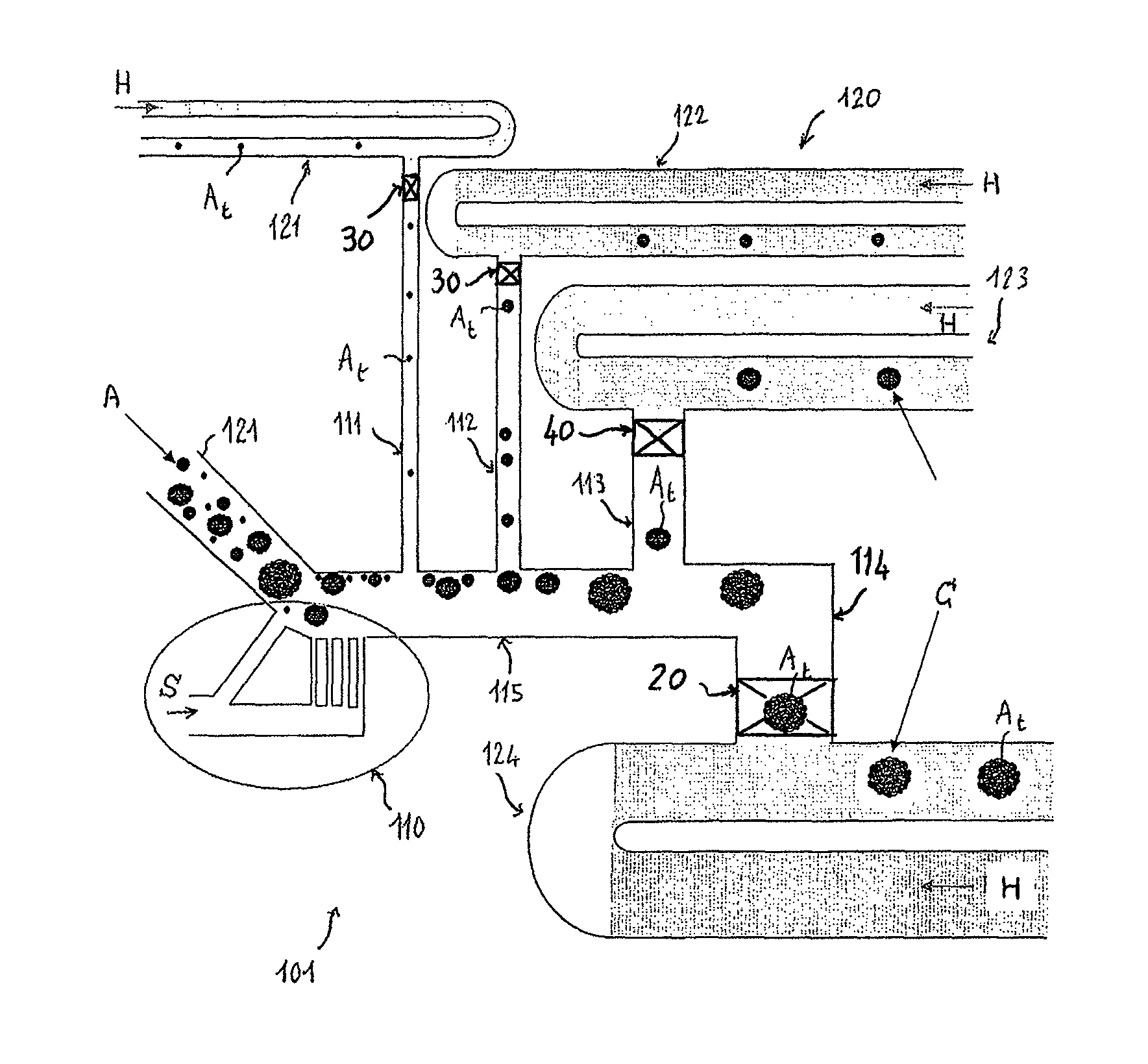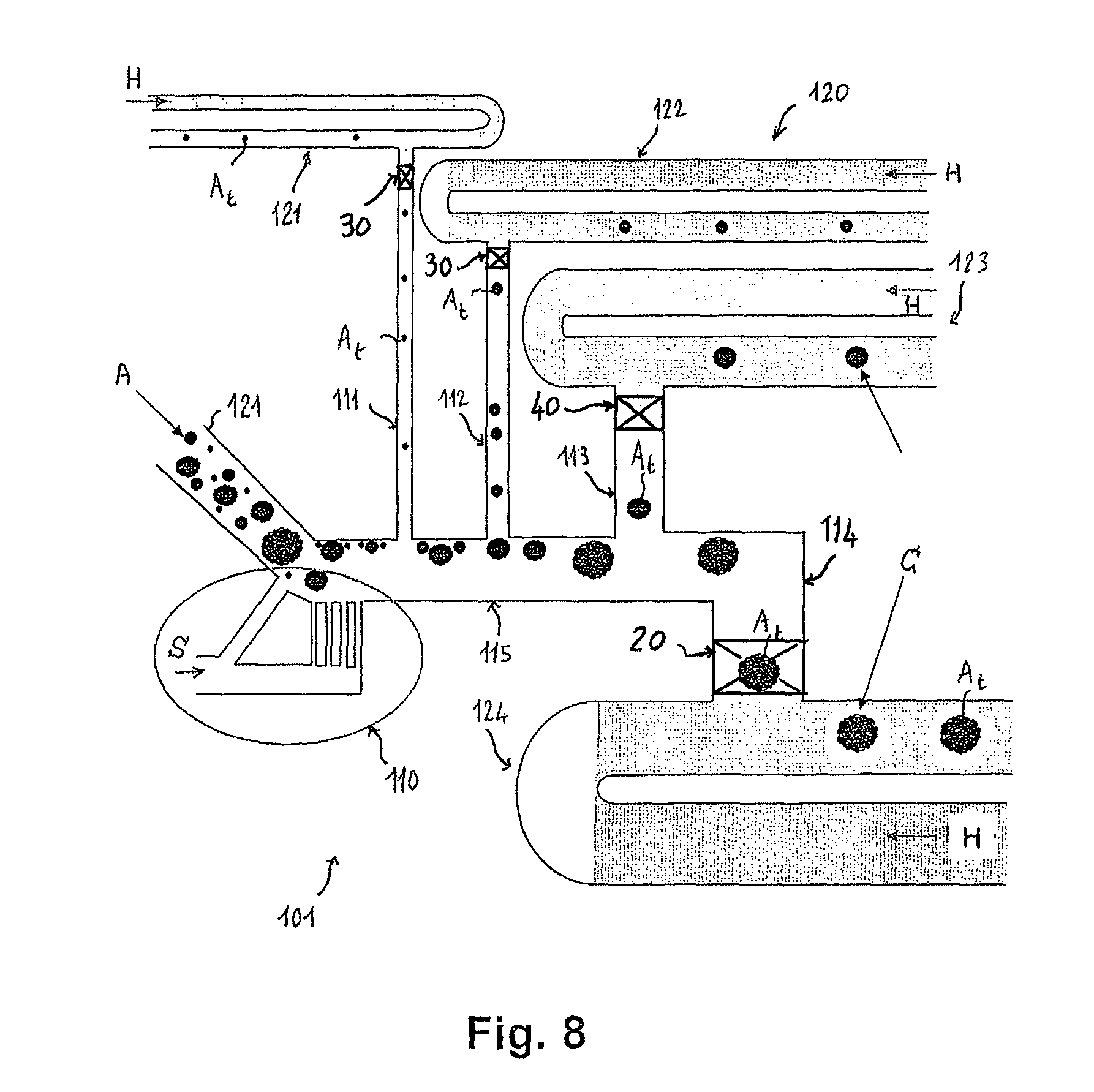Microfluidic system and method for sorting cell clusters and for the continuous encapsulation thereof following sorting thereof
a microfluidic system and cell cluster technology, applied in the direction of positive displacement liquid engines, instruments, laboratory glasswares, etc., can solve the problem of limiting the range of shear stresses that can be applied by the sorting unit, and achieve the effect of minimizing the pressure loss during sorting
- Summary
- Abstract
- Description
- Claims
- Application Information
AI Technical Summary
Benefits of technology
Problems solved by technology
Method used
Image
Examples
Embodiment Construction
[0102]A microfluidic system 1 according to the invention may, for example, be produced, with reference to FIGS. 1 to 7 which give an account of various steps based on known methods of microelectronics on silicon, i.e., in particular, lithography, deep etching, oxidation, stripping and bonding of a protective cover 2 on the substrate 3. This technology on silicon has the advantage of being very accurate (of the order of a micrometer) and non-restrictive both in terms of the etching depths and in terms of the widths of the units. More specifically, the protocol for producing the microsystem 1 is the following:
[0103]A deposit of silicon oxide 4 (FIG. 1) is made on the silicon substrate. A photosensitive resin 5 is then deposited by spreading on the front face (FIG. 2), following which the silicon oxide 4 is etched through the layer of resin 5 by photolithography and dry etching of the silicon oxide 4, stopping on the silicon substrate 3 (FIG. 3).
[0104]This substrate 3 is then etched to...
PUM
| Property | Measurement | Unit |
|---|---|---|
| size | aaaaa | aaaaa |
| size | aaaaa | aaaaa |
| size | aaaaa | aaaaa |
Abstract
Description
Claims
Application Information
 Login to View More
Login to View More - R&D
- Intellectual Property
- Life Sciences
- Materials
- Tech Scout
- Unparalleled Data Quality
- Higher Quality Content
- 60% Fewer Hallucinations
Browse by: Latest US Patents, China's latest patents, Technical Efficacy Thesaurus, Application Domain, Technology Topic, Popular Technical Reports.
© 2025 PatSnap. All rights reserved.Legal|Privacy policy|Modern Slavery Act Transparency Statement|Sitemap|About US| Contact US: help@patsnap.com



